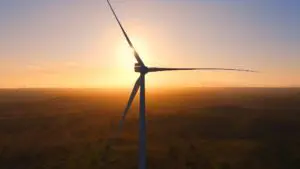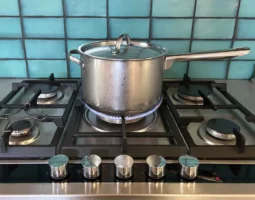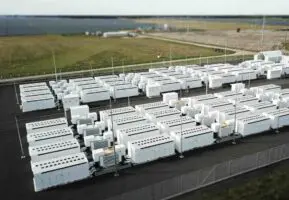 A new Australian start-up solar company believes that the Australian market for rooftop solar leasing for the residential and commercial sectors could reach $100 billion in the next decade.
A new Australian start-up solar company believes that the Australian market for rooftop solar leasing for the residential and commercial sectors could reach $100 billion in the next decade.
Kudos Energy was one of three solar companies that were allocated a total of $120 million by the Clean Energy Finance Corporation (CEFC) to help kick-start the solar leasing market in Australia.
Kudos may be a start-up, but it’s no up-start. It is the brainchild of two leading private equity investors: David Jones, formerly from Australia’s CHAMP private equity, and Zeb Rice, from California-based PE investor and energy specialist Angeleno Group.
Kudos, like the other companies that accessed the CEFC finance, thinks that the solar leasing market has all the right ingredients – a growing market for a new technology and an annuity stream that will attract big investors.
“I think we can pretty quickly get to a market segment that is worth tens of billions, or even $100 billion, that is third-party owned,” Jones told RenewEconomy in an interview.
“With the depth of the capital markets in Australia, and the size of the super funds and their search for quality investments, we see this market genuinely taking off. We think this is the start of something substantial.”
Kudos will access $30 million in debt finance from the CEFC and supplement this with $20 million in equity that it has raised from high net worth individuals.
Jones said this $50 million would probably be enough money to handle up to 3,000 installations, but there was a potential addressable market of a large proportion of the 10 million different electricity customers in the country.
If you think that forecast is out of the ballpark, consider the analysis from groups such as WA’s grid operator, the IMO, which recently predicted that 75 per cent of detached and semi detached homes and 90 per cent of commercial businesses could have rooftop solar within a decade.
Solar leasing – or third-party ownership – means no upfront cost for homeowners or businesses, and a fixed contract or power purchase agreement that usually provides cheaper electricity than current supplies; and long-term price certainty.
Jones says he has no doubt that finance will be available once the concept is proved and the market takes off, and Kudos gets around to raising capital – debt and equity – from private sources for subsequent funds.
He says there is huge interest from private debt providers (mostly banks). None, however, was brave enough to be the first in the market, hence the need for the CEFC to act as a catalyst and to help prove the concept.
“We were speaking to number of private debt providers, and they were worried about 10 things, and eight of those concerned the fact that we are a renewable energy start-up,” Jones said.
“If we can get sensible debt from the CEFC, we can prove the idea and go back to private markets and no longer be a start-up.
“We think there is a lot of fast follow-on interest. They (the banks) want to follow, but they don’t want to lead. So hats off to the CEFC, they are lending where the private market won’t currently lend, but when they do then they (the CEFC) can take a step back.”
And, Jones says, there are huge licks of equity capital that will also be available.
Jones says that the solar leasing business will appeal as an annuity-style infrastructure investment with few risks. There are no moving parts, no variable fuel costs, and the modules are guaranteed for 25 years.
“This is distributed generation infrastructure. This is infrastructure. It is an annuity. The sun is free, there is no variable fuel cost, and there are long-term contracts and low maintenance.
Rice says the Australian market is at the stage the US market was about five years ago. Around 75 per cent of solar installations are done under leases or third-party ownership models.
Jones says the business plan does rely on the renewable energy target, and the continuation of the small-scale component. If it is removed, some customer segments will become uneconomic, but other parts of the business will still remain.
Kudos will initially focus on the commercial market – larger systems of 30kW or more on warehouses, shopping centres and manufacturing businesses – because of the demand profile of those businesses.
“The businesses we talk to say that if you put solar on my roof for free, and I don’t have to maintain it, I can have green credentials, and even if you offer the same price, but visibility on power price for 15 years, they say ‘where do I sign’?”
However, he expects the residential solar leasing market will grow rapidly once battery storage becomes an economic solution, which could be as soon as two to three years away.
“That’s when residential leasing becomes more interesting.”
Rice says major companies are already providing 10-year warranties for battery storage, which will allow for finance for 10 year power purchase agreements for solar-storage systems.
That will allow companies such as Kudos to install systems that will account for 60 per cent to 80 per cent of a customer’s electricity use, compared to around 30 per cent with solar only.
Rice says that incumbent utilities will react and there will be competition, and Kudos will need to be nimble. But there are already signs that incumbent utilities see the inevitable transition.
“The retailers, at some point, will say that if you can’t beat them, then join them. We are starting to see that. They will say the ship has sailed, how do I become a partner with Kudos.”








